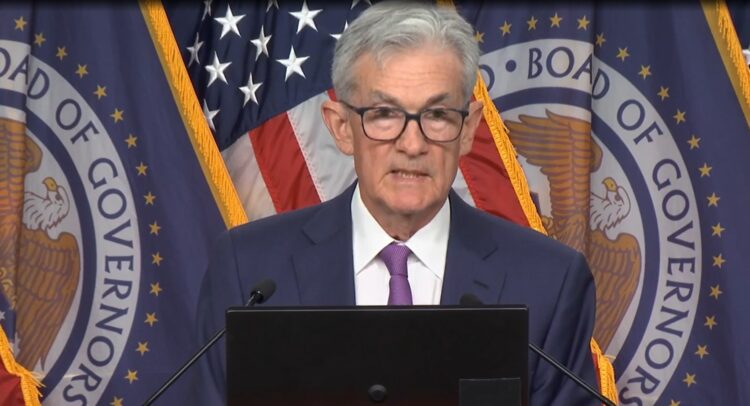The Federal Open Market Committee (FOMC) minutes for the April 30-May 1 meeting were just published, revealing that the Fed struck a more hawkish tone with monetary policy multiple times during the meeting. A hawkish undercurrent has been absent from the meetings this year but is undeniably present in sections related to the economic outlook within the report.
Below are five of the more interesting findings from the minutes, suggesting that the Fed may be partially straddling the fence right now—willing to entertain either tighter or easier policy depending on upcoming data.
Five Hawkish Conversations
Inflation Concerns: The overriding sentiment throughout the discussions is one of worry about persistent inflationary pressures. While acknowledging some signs of price increases moderating, the members emphasized the need for continued vigilance to bring inflation under control, even if it entails hiking interest rates.
Balance Sheet Reduction: Up until the meeting, the Fed had been allowing $60 billion in U.S. Treasuries from its balance sheet to mature without triggering new replacement purchases by the Federal Reserve. These are balance sheet holdings accumulated from the stimulative Quantitative Easing (QE) periods beginning in 2009 and escalated again during the pandemic. Beginning a few months ago, the Fed had indicated it was eager to allow fewer bonds to roll off, thereby more slowly reducing its balance sheet and tapering Quantitative Tightening (QT).
While not explicitly stated as a policy decision at this point, the minutes mention a “number of participants” favoring a plan for gradual balance sheet reduction to begin “later this year.” This indicates that some thought it was not a good idea to begin to reduce tighter policy through the QT that has been in place. However, the vote to do so was not unanimous.
Rate Hikes: According to the minutes, in discussing the outlook of monetary policy, a majority of Fed officials felt more comfortable holding the federal funds rate target range steady at 5.25% to 5.50% for longer until inflation shows signs of trending back to the 2% target on a sustainable basis. Conversations ensued surrounding the Committee’s “ongoing commitment to returning inflation to the 2% target.” This indicates a willingness to continue holding rates steady, with some members open to interest-rate hikes if the progress on inflation stalls.
Rate Equilibrium Too Low: The minutes discuss concerns that the current federal funds rate may still be “too low” to effectively combat inflation. Committee members were uncertain if fed funds were at the right level as they discussed the “possibility that high interest rates may be having smaller effects than in the past.”
Labor Market Strength: While acknowledging the strength of the labor market, the FOMC participants indicated a willingness to remain so tight that it leads to some cooling in the job market if it is necessary to combat inflation.
Taken together, the minutes suggest a slight potential for cautious rate hikes after upcoming meetings. However, their official stance is more likely that the next rate move is downward.
The Fed Beating the Odds
FOMC members spoke about the odds of achieving their dual mandate of maximum employment and price stability, suggesting the economy “moved toward better balance over the past year,” according to the minutes. However, the biggest challenge that keeps them “highly attentive” is the risk posed by higher inflation, as well as the sometimes wobbly U.S. economy.
Key Takeaway
The May 1, 2024, FOMC minutes paint a picture that the Committee has grown some monetary policy hawks. While there was a decision to reduce QT, the timing of future rate decreases was left so uncertain that one might expect the next direction to be a coin toss. What is clear is the Fed’s resolve at this meeting to maintain a strong commitment to combating inflation and a willingness to be patient, but still do what is necessary.
















